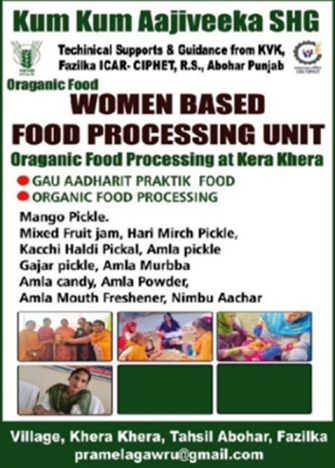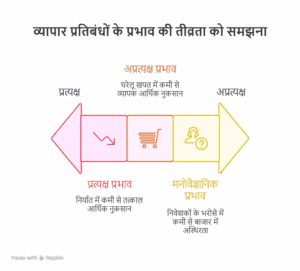27 Oct Future of Vegetable Farming in India: From Open Fields to Vertical Walls
भारत में सब्जी की खेती का भविष्य: खुले खेतों से खड़ी दीवारों तक
Vegetable farming has long been a vital part of Indian agriculture, serving as a source of income for millions and providing food for a population exceeding 1.4 billion. For generations, Indian farmers have depended on traditional open-field methods, taking advantage of the rich soils and varied climates to cultivate staples like tomatoes, onions, and various leafy greens. However, the landscape of vegetable farming is changing rapidly due to rising population numbers, diminishing agricultural land, and the effects of climate change. These factors are pushing the sector towards a new era of farming practices. Innovations like vertical farming, hydroponics, and precision agriculture are transforming how vegetables are produced, shifting from expansive fields to innovative, space-efficient systems such as vertical gardens. This article delves into the journey of vegetable farming in India, examining the hurdles faced along the way and highlighting the exciting potential of vertical farming adapted to the unique Indian environment.
Challenges in Traditional Vegetable Farming
Traditional vegetable farming in India is currently facing a multitude of challenges that jeopardize its sustainability. One of the most pressing issues is rapid urbanization, which has drastically reduced the available farmland. Cities such as Mumbai and Bengaluru are expanding into fertile peri-urban areas, leading to significant land loss. According to the Ministry of Agriculture, around 20 lakh hectares of agricultural land were lost from 2001 to 2018 due to this urban sprawl. Water scarcity presents another major obstacle, especially in states like Punjab and Maharashtra. Here, over-irrigation has severely depleted groundwater resources. The Central Ground Water Board indicates that 17% of India’s groundwater blocks are currently overexploited.
To make matters worse, climate change is intensifying these challenges. Unpredictable monsoons, rising temperatures, and frequent droughts are having a negative impact on crop yields. For example, in 2023, tomato production in Andhra Pradesh fell by 15% due to unexpected rains. Moreover, soil degradation is a growing concern, driven largely by the excessive use of chemical fertilizers and pesticides. In regions like Uttar Pradesh, around 30% of farmland shows signs of nutrient depletion, which further hampers productivity. Smallholder farmers, who make up 86% of India’s farming community, often find themselves at a disadvantage. They typically lack access to modern technology, quality seeds, and affordable irrigation systems, which limits their ability to adapt to these pressing challenges.
The Rise of Vertical Farming
Vertical farming, a method where crops are grown in stacked layers within controlled environments, presents a groundbreaking answer to the challenges faced in agriculture today. Unlike traditional methods, vertical farms utilize hydroponics, aeroponics, or aquaponics to cultivate vegetables without soil, relying instead on nutrient-rich water or mist. These innovative systems are often found in greenhouses or repurposed buildings, typically fitted with LED lighting, automated climate control, and sensors that enhance precision in farming. In India, vertical farming is becoming increasingly popular in urban areas where land is limited and the need for fresh produce is on the rise.
Advantages for India
Vertical farming tackles numerous issues that plague Indian agriculture. Firstly, it greatly increases land use efficiency. A vertical farm can yield 10 to 20 times more vegetables per square meter compared to traditional open fields, making it a perfect fit for bustling cities like Delhi and Chennai, where land prices can be incredibly high. For instance, a vertical farm occupying just 100 square meters in Bengaluru can produce as much as a typical open field covering 1,000 square meters.
Secondly, it significantly reduces water consumption, using up to 90% less than conventional farming techniques. This is particularly beneficial in areas such as Rajasthan, where water scarcity is a pressing issue. Thirdly, vertical farms are resilient to climate fluctuations; the controlled environments help lessen the effects of unpredictable weather. Lastly, they provide the opportunity for year-round crop production, guaranteeing a consistent supply of vegetables like spinach and lettuce, even during off-seasons.
Indian Innovations in Vertical Farming
In India, startups and research institutions are leading the charge in vertical farming, customizing approaches to fit local requirements. Take Urban Kisaan in Hyderabad, for instance. They’ve created modular hydroponic systems that significantly cut down setup costs, making it possible for small entrepreneurs to dive into vertical farming. Remarkably, their farms use 95% less water and can grow crops like kale and basil in 40% less time compared to traditional methods.
On another front, Bengaluru’s Apona Farms is making waves by using IoT sensors to keep an eye on nutrient levels and fine-tune growth conditions. This tech-driven approach has resulted in a 30% boost in yield for microgreens. Meanwhile, the Indian Council of Agricultural Research (ICAR) is getting in on the action, pushing vertical farming initiatives through pilot projects in regions like Punjab and Tamil Nadu. These projects emphasize affordable designs think vertical wall systems that utilize coconut coir or recycled materials as growing mediums, which are perfect for smallholder farmers. A noteworthy pilot in Coimbatore in 2024 showcased those vertical farms can yield 50 kg of leafy greens each month within a 10-square-meter area, a significant leap from the 20 kg typically produced in open fields.
Some companies of vertical farming in India
| S. No. | Name | Location | Year | Products |
| 1 | Pindfresh | Nayagaon, Punjab | 2016 | Clay balls, grow bags and net pots |
| 2 | Growing Greens | Bangalore, Karnataka | 2012 | Mint, Spinach and Coriander |
| 3 | Homecrop | Hyderabad, Telangana | 2017 | Coco peat and composting kits |
| 4 | Sure Grow | Coimbatore, T. N | 2017 | Lettuce and strawberry |
| 5 | Urban Kisan | Vishakhapatnam, A. P | 2017 | Lettuce and hydroponic system |
| 6 | City Greens | Bangalore, Karnataka | 2017 | Growing media and seed starters |
| 7 | The Living Greens | Jaipur, Rajasthan | 2013 | Organic input kits and fruit bags |
| 8 | Ikheti | Mumbai, Maharashtra | 2011 | Seeds and gardening tools |
Technologies Driving the Future
The future of vertical farming in India is being shaped by innovative technologies. At the forefront is hydroponics, a method where plants thrive in nutrient-rich water. This system is favored for its ease of use and the ability to scale up. Meanwhile, aeroponics is gaining traction, particularly for high-value crops such as cherry tomatoes, as it utilizes mist to deliver essential nutrients. Another crucial element are LED grow lights, specifically designed to emit certain wavelengths that optimize photosynthesis and lower energy expenses. For instance, in Pune, startups like Greenopia are harnessing solar-powered LEDs to create sustainable vertical farms, especially in rural regions where electricity can be unreliable.
The Internet of Things (IoT) and artificial intelligence (AI) are revolutionizing precision agriculture as well. IoT sensors actively track factors like temperature, humidity, and nutrient levels in real-time. Simultaneously, AI algorithms help predict how crops will grow and optimize the use of resources. For example, a vertical farm in Gurugram that employs AI-driven irrigation has managed to cut water usage by 25% when compared to traditional methods. Additionally, the rise of drones and robotics is making waves in this field, with companies like Cropin leading the charge in developing automated harvesting systems for expansive vertical farms.
Economic and Social Impacts
The rise of vertical farming stands to significantly transform India’s agricultural landscape. This innovative approach can help lessen the reliance on seasonal crops, leading to more consistent incomes for farmers, especially those who are smallholders. According to a 2024 report from the National Bank for Agriculture and Rural Development (NABARD), a vertical farm spanning just 200 square meters could yield an annual income of around ₹5 to 7 lakh, which is a notable increase from the ₹2 to 3 lakh typically generated by traditional farming in the same area.
Furthermore, urban farming initiatives are creating numerous job opportunities in areas such as technology, logistics, and retail, which is particularly beneficial for the youth in bustling cities like Kolkata and Ahmedabad. On the social front, vertical farming plays a crucial role in enhancing food security by making fresh produce more accessible to urban dwellers. For instance, in Mumbai, rooftop vertical farms are providing restaurants with fresh, pesticide-free herbs, which not only cuts down on transportation costs but also helps reduce carbon emissions.
Moreover, vertical farming empowers women farmers, who often encounter obstacles in conventional agriculture. A notable example can be found in Chennai, where a cooperative is offering training programs for women to manage vertical farms, equipping them with vital skills and promoting financial independence.
Challenges and the Way Forward
Vertical farming in India holds a lot of promise, but it also encounters significant challenges. One of the biggest barriers is the steep initial investment required for infrastructure like grow lights and climate control systems, which can be off-putting for small farmers. Setting up a basic 100-square-meter vertical farm might cost anywhere from 10 to 15 lakh, in stark contrast to the 1 to 2 lakh needed for traditional open-field farming.
Moreover, energy costs present another significant obstacle, as commercial electricity tariffs in India are quite high. Consumer awareness regarding the benefits of vertically grown produce remains low, and the market for premium crops, such as microgreens, is still quite limited. To tackle these issues effectively, support from the government is essential. For instance, subsidies for solar panels and low-interest loans available under the Pradhan Mantri Kisan Urja Suraksha evam Utthaan Mahabhiyan (PM-KUSUM) scheme could help bring down these costs. Additionally, public-private partnerships, like those in Telangana, have the potential to enhance training programs for farmers. Awareness campaigns backed by agricultural universities can also play a crucial role in increasing demand for vertically grown vegetables. Furthermore, research into affordable systems, such as bamboo-based vertical walls, could pave the way for making this technology more accessible to rural farmers.
Conclusion
The future of vegetable farming in India is all about blending cutting-edge innovation with the rich agricultural traditions of the country. One exciting option is vertical farming, which addresses challenges like limited land, water shortages, and changing climate conditions. This approach opens up sustainable avenues for growth. Imagine the journey from the expansive fields of Punjab to the bustling rooftops of Mumbai, where vertical gardens could flourish. This shift not only promises greater yields but also ensures that resources are used more efficiently and farming becomes tougher against unpredictable challenges.By committing to technology, enhancing training, and implementing supportive policies, India has the chance to become a leader in the next wave of farming practices. This transformation is key to achieving food security and fostering prosperity for both farmers and consumers across the nation.
References
Chandrasekaran, V. (2022). “Hydroponics: A Sustainable Solution for Indian Agriculture.” Journal of Agricultural Science and Technology, 24(3), 45–52.
IMARC Group. (2024). “India Vertical Farming Market Report 2024–2033.
Indian Council of Agricultural Research (ICAR). (2023). “Annual Report 2022–2023.
National Bank for Agriculture and Rural Development (NABARD). (2023). “Economic Impact of Modern Farming Techniques in India.
Sowmya, C., Anand, M., Rani, C. I., Amuthaselvi, G., & Janaki, P. (2024). Recent developments and inventive approaches in vertical farming. Frontiers in Sustainable Food Systems.
World Bank. (2020). “India: Agriculture and Rural Development.”
Authors:
Satvir Singh* and Pratibha Singh
Ph D Scholar, Department of Vegetable Science, College of Horticulture,
Dr. Yashwant Singh Parmar University of Horticulture and Forestry,
Nauni, Solan, Himachal Pradesh, India 173230
Correspondence: stvrsdhu13@gmail.com
Related Posts
………………………………………
Related Posts





